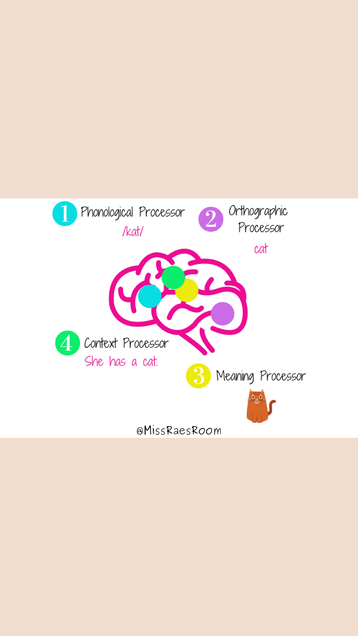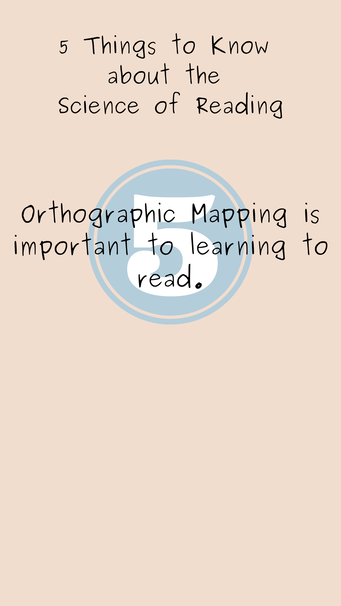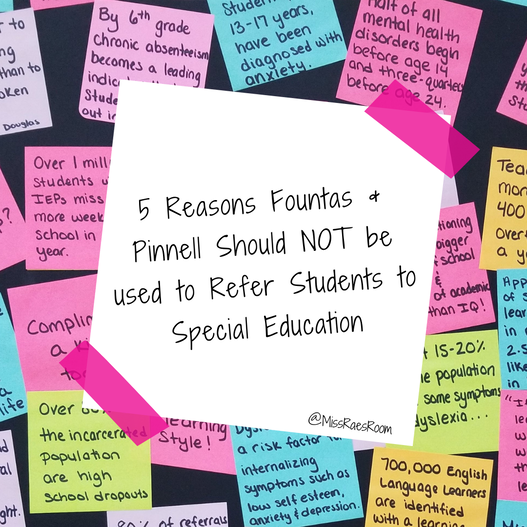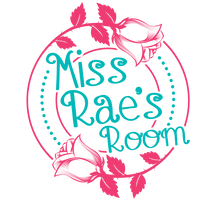|
Well, first let’s start with some background knowledge. What is the Science of Reading??? The Science of Reading is 20 plus years of reading research, and it gives teachers the best strategies for teaching students to read based on research of how the brain learns to read. Our brains are wired to speak, but not to read. We have been speaking for over 100,000 years, but we have not been reading and writing for that long. The first writing systems were invented about 10,000 years ago. Alphabetic writing (so when we changed from drawings to express stories to letters to convey words) evolved about 5,000 years ago. The Science of Reading research, provides an evidence-based best practice approach for teaching foundational literacy skills called Structured Literacy. Structured Literacy emphasizes a purposeful, direct, systematic, and explicit reading and language arts instructional framework for instructing students to decipher words in prints and to focus on the goal of reading, which is to learn, enjoy, and comprehend text, through individualized instruction, informed by deliberate assessment. -The Simple View of Reading looks at reading like a math equation: Decoding x Linguistic/Language Comprehension = Reading Comprehension -There are 5 Pillars of Reading: Phonemic Awareness, Alphabetic Principle, Fluency, Vocabulary, and Comprehension, all integral to the… -3 Layers of Reading Development: 1 - letters and sounds, 2 - phonic decoding, 3 - orthographic mapping What are advanced phonemic awareness skills? Early phonemic awareness are the skills typically develop in preschoolers and include rhyming (e.g. sit, pit, lit), alliteration (e.g. the cute cat can cry), being able to segment words into syllables (e.g. /syll/ /a/ /bles/), and being able to identify the first sounds in words. Basic phonemic awareness skills are typically developed throughout kindergarten and first grade. Basic phonemic awareness skills include phoneme blending and phoneme segmentation. These basic skills are instrumental in phonic decoding and early spelling.
Advanced phonemic awareness skills are the skills typically developed by about third or fourth grade. Advanced phonemic awareness skills include the ability to manipulate phonemes, such as
AND they are required for proficient reading. This means that phonemic awareness skills must be explicitly taught. Students must be able to achieve mastery of advanced phonemic awareness skills to be able to proficiently read. Orthographic Mapping is the formation of letter-sound connections to bond the spellings and pronunciations of specific words in memory It explains how student brains memorize how words look-sound. The process we use to store printed words in long-term memory is the third level of reading development called orthographic mapping. Orthographic mapping is the efficient expansion of sight vocabularies, requiring letter-sound skills and advanced phonological awareness skills. Research has demonstrated that orthographic mapping is the most efficient strategy for moving word patterns into long-term memory for students, thus increasing a student’s sight word vocabulary. Get this instructional sequence AND grab my FREE Phoneme Grapheme Mapping Board by clicking HERE! Happy and Healthy Teaching! Peace, Miss Rae Learn more...Related Resource...
3 Comments
7/4/2019 4 Comments 5 Reasons Fountas & Pinnell Should NOT be used to Refer Students to Special EducationThe Fountas & Pinnell Benchmark Assessment System has been popular literacy assessment over the years. This universal screener is administered individually, requiring about 20 – 40 minutes per student. The screener includes an oral reading component and a comprehension component. When taken together, these two components provide an instructional level for each student (independent, instructional, frustrational). The Fountas & Pinnell Benchmark Assessment System is similar to a running record, but… A Fountas & Pinnell reading level should NOT be the determining factor for a Special Education referral! F&P is Subjective! The Fountas & Pinnell Benchmark Assessment System is a subjective measure. This is because there is no right or wrong answer, and a teacher’s beliefs, assumptions, emotions, and opinions can influence the outcome of the score. Objective assessments have a single correct answer. Think true or false, multiple choice, and matching questions. Subjective tests include extended response questions and essays, or in other words, the Fountas & Pinnell Benchmark Assessment System. In addition, many of the benchmark tests include some inherent bias toward culture, background knowledge of the student, etc. In addition, at the start of the year, students can be hesitant to talk to a new teacher, while some students are shy all year! The open ended questioning format of the test can be biased against shy students, students lacking language, and others. The personality of a student can impact the outcome of the assessment. F&P is Only One Data Point As teachers, we know that one data point cannot be used to make an educational decision. Good teachers use numerous types of data from many sources to determine student strengths and areas to improve. How often does a student score one way on the Fountas & Pinnell Benchmark Assessment System, but is unable to read that same level of authentic text? Self-Correction Scores Do Not Impact F&P Reading Levels Self-correction is not taken into account when determining a student's reading level in the Fountas & Pinnell Benchmark Assessment System. Some students are able to achieve high accuracy and high comprehension scores, despite also demonstrating a high self-correction rate. Self-correction in reading is a good skill that teachers love to see. It shows us that students are visually attending to the text and self monitoring for meaning of the text. Typically, a high self-correction rate impacts comprehension, but for some students, it does not. This can mean that a student is reading “too fast” and not attending to the text for phonics (decoding) principles. This should indicate to a teacher that the student requires explicit instruction in attending to the text and may indicate a need for explicit instruction of phonics skills noted in the self-corrections on the running record. F&P is NOT Norm-Referenced The Fountas and Pinnell Benchmark Assessment is a criterion-referenced tests. Such tests are designed to determine if a student has a set of skills. A norm-referenced assessment compares the student’s performance to other same-aged students. Fountas & Pinnell Benchmark Assessment System touts itself as just that - a benchmark assessment! This means that it can be used to measure student progress against a grade level or learning goal. Benchmark assessments, like the F&P, are interim assessments and should be given in between formative and summative assessments. The F&P Benchmark Assessment is based on empirical research on language development, vocabulary expansion, reading acquisition, and reading difficulties. The assessment system has been field tested, but there is no empirical evidence on it. There are NO F&P Police The F&P Benchmark Assessment does have directions for administration; however, as teachers, we know that every student is different, and not every student follows the rules! What happens when a student makes an error on the same word repeatedly? Does this count as multiple errors or just one? What happens when the fluency rate is extremely low, but the accuracy and comprehension scores meet expectations? So who do we go to with our questions about the students who do not follow the F&P rules? Many schools have literacy coaches, but every coach seems to have their own interpretation and answers to our questions! For instance, I was once told that we stop assessing a student when he/she has achieved one year above grade level, even if we think this student could read at a higher level. Is this right? While scores may have F&P norms in place, who is enforcing them? Are they F&P’s rules? And doesn’t this just add to more subjectivity? Fountas & Pinnell Should NOT be used to Refer Students to Special Education Independent studies examining the usefulness of the Fountas and Pinnell Benchmark Assessment System as a universal screener are limited. Furthermore, in studies, using F&P to identify students as at-risk have resulted in moderate sensitivity, or unacceptable rates of identification (Burns, et al., 2015). Fountas and Pinnell reading levels are one descriptor of a student’s reading ability, but it should not be our sole indicator. Its purpose is to inform instruction for teachers, relay to teachers, students, and families which skills are important to master, and express a student’s progress towards those learning goals, not to determine Special Education eligibility. By Miss Rae References: Burns, M. K., Pulles, S. M., Maki, K. E., Kanive, R., Hodgson, J., Helman, L. A., Preast, J. L., (2015). Accuracy of student performance while reading leveled books rated at their instructional level by a reading inventory. Journal of School Psychology, 53, 437-445. Center on Response to Intervention: Screening Tools Chart (https://rti4success.org/resources/tools-charts/screening-tools-chart) Klingbeil, D. A., McComas, J. J., Burns, M. K., & Helman, L. (2015). Comparison of predictive validity and diagnostic accuracy of screening measures of reading skills. Psychology in the Schools, 52(5), 500-514. http://doi.org/10.1002/pits.21839 Parker, D. C., Zaslofsky, A. F., Burns, M. K., Kanive, R., Hodgson, J., Scholin, S. E., & Klingbeil, D. A, (2015). A brief report of the diagnostic accuracy of oral reading fluency and reading inventory levels for reading failure risk among second- and third-grade students. Reading & Writing Quarterly, 31, 56-67.
How do I find the time to teach Science and Social Studies???
How do I find the time to cover all of the curriculum, nevermind actually teach it??? How do I get my students to work cooperatively together??? How do I get my students to work together to learn together??? Well, I have the answer. Get your students to work together to learn together using the jigsaw reading teaching strategy! Plan: Every student will work in an Expert Group to become an “Expert” on a topic or skill. These students will all read the same text together, determine the main idea, and then, use their expert knowledge to teach the students in their Home Groups about the topic or skill. First, make your Expert Groups Expert Groups should consist of 3-5 students who similar reading abilities. Essentially, these should be homogeneous groups. Next, find a set of reading selections on the content you are teaching. For example, if you are studying Plants, perhaps one Expert Group reads about the parts of the plants and their functions, another Expert Group will receive a text about the life cycle of a plant, and the last Expert Group will read a text about adaptations of plants. These should be short texts. Think the length of an article in a magazine! Note: It is important that the reading material assigned is at appropriate instructional levels (90–95% reading accuracy). I use sections from textbooks, chapters from novels, or websites with FREE non-fiction articles like...Newsela (https://newsela.com/) or ReadWorks (https://www.readworks.org/) Next, make your Home Groups. There should be one “Expert” from each Expert Group in each Home Group.
Launch:
Explain to students that they will be working in different cooperative groups to become “Experts” on a topic or skill Introduce the strategy and/or the topic to be studied. Explore: Then, group students into their Expert Groups and provide them with their assigned text to read. Give students an appropriate amount of time to read the assigned text. Provide students with highlighters, sticky notes, and/or a graphic organizer for notetaking. It should be explained to students that while reading their texts in their Expert Groups, they should be reading for main ideas, supporting details, and key terms. It is going to be the Experts’ jobs to teach other students about what they read. After the Experts have finished reading the text, students should work together in their Expert Groups make sure that all members of the group fully understand the ideas presented and are able to accurately summarize their learning. Note: You may provide key questions and/or a graphic organizers to focus the discussion. Next, students move to their Home Groups. While in their Home Groups, each student (or Expert) will report the information learned from their Expert text (or the text they read in their Expert Group). It is important to remind students that Home Group members are responsible to learn ALL content from one another. Using our Plant example, each Home Group should have one student from the Expert Group that read about the parts of the plants and their functions, one student from the Expert Group that read about the life cycle of a plant, and one student from the Expert Group that read about adaptations of plants. Each member of the Home Group is expected to learn about each topic or skill learned by the Expert. You may wish to prepare a summary chart or graphic organizer for each Home Group as a guide for organizing the Experts' information into a report of some sort. Summarize: Facilitate a whole class discussion to summarize the students’ learning. Ask Home Groups to report out about what they learned from each other!
OR try this variation to the Jigsaw Reading Cooperative Learning Strategy:
And there you have it!
You taught your students to work together to learn together! (Oh, and you taught content you didn’t even know you had time to teacher AND you did it all in one lesson!) Happy Teaching! Miss Rae |
CategoriesAll Comprehension CoPlanning CoTeaching Directed Reading DIY Fluency Fountas & Pinnell Graphic Organizers Guided Reading Lesson Planning Multi-Tiered Systems Of Support Phonological Awareness RAN Read And Respond Reading Reading Assessments Reading Comprehension Response To Intervention RTI Science Of Reading Science Of Reading For Special Education Teachers Special Education Special Education Eligibility Special Education Lesson Planning Teaching Strategy Visualizing & Verbalizing Visual Texts Vocabulary Writing Writing In Response To Reading |



















 RSS Feed
RSS Feed